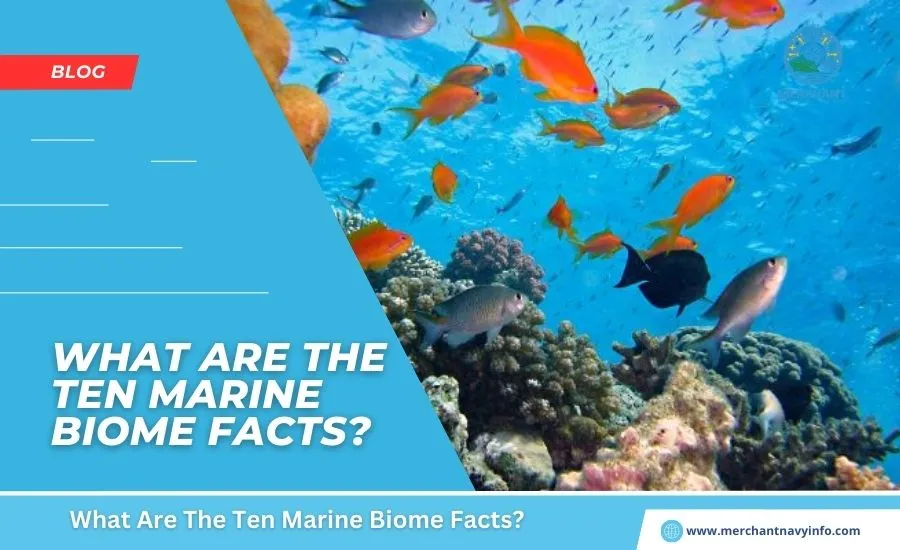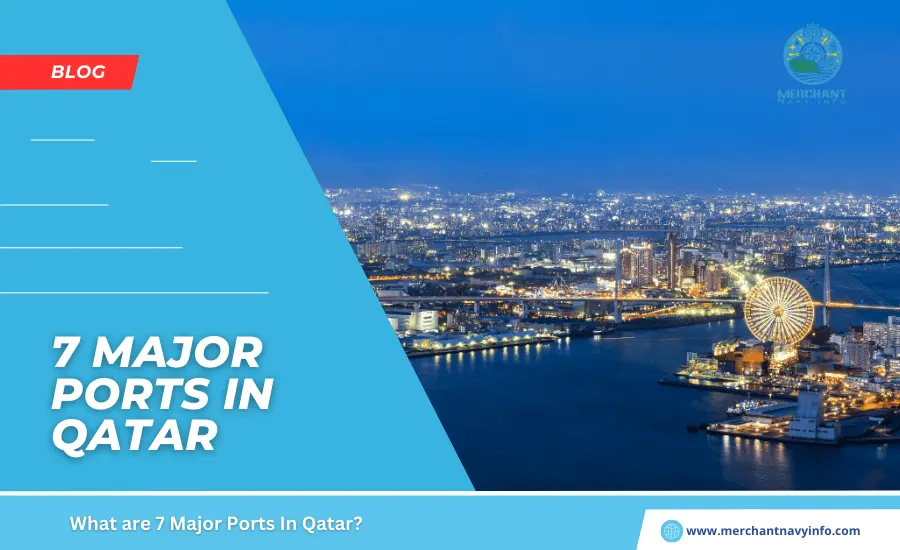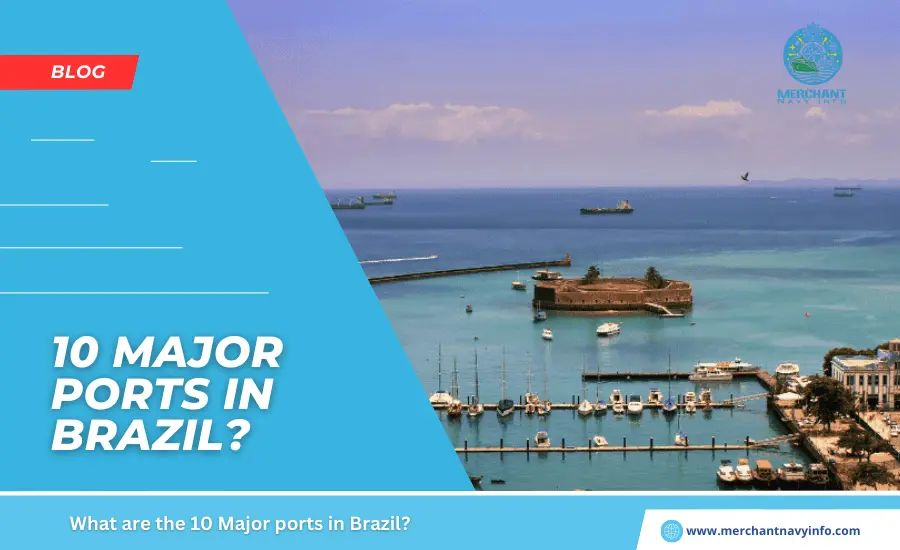
The marine biome, or the saltwater biome, rules our planet and is interesting in numerous ways. It shapes and underpins special biological systems and living beings, which play a useful part within the life of our planet while beautifying it as well. It adds up to a win-win, isn’t it? However, before diving into the marine biome facts, it is basic to clearly get the meaning of biome and marine biome.
Dr Dietrich Malinger, a popular earthy person, coined the term ‘biome’ in 1967. He characterized a biome as an unmistakable environmental unit with a special climate, geology, and geology. The creatures, plants, and other living beings living in a specific biome or range adjust to their environment by creating extraordinary adjustments for surviving. For illustration, angles have gills to breathe in a sea-going biome.
The freshwater biomes, such as lakes, waterways, lakes, streams, and wetlands; the marine biomes, counting seas, corals, and estuaries; the leave biomes, timberland biomes, tundra biomes, and prairie biomes. They are isolated into bunches based on their area, geology, transcendent vegetation, and life forms.
Ten Marine Biome Facts
1. The Marine Biome is the Biggest of all the Biomes in the World

Though there are five other marine biome facts above, the marine biome is the biggest and most different of them all. It primarily comprises saltwater seas and covers approximately 70 percent or three-fourths of our planet’s surface range, whereas bookkeeping for 90 percent of the entire water supply within the world.
It is domestic to thousands of plant and creature species that straightforwardly or by implication affect the environment they live and flourish in. Separated from seas, it also comprises smaller bodies of water, including saltwater oceans, coves, and inlets. Marine biomes, as a rule, normally contain salt concentrations of approximately three percent, whereas freshwater biomes have less than one percent salt concentration.
2. The Marine Biome is Separated into Three Environments- Seas, Coral Reefs, and Estuaries

These are the five major interconnected seas that cover the world- the Atlantic, Pacific, Indian, Cold, and Southern or Antarctic Seas. In a few places, the seas are more profound than the world’s tallest mountains.
The Pacific Sea is the biggest in the world, covering approximately 63 million square miles. It has the most profound put on soil- the Mariana Trench, which comes to a profundity of 32,800 ft. These immense water bodies are partitioned into 3 layers- the disphotic, the euphotic, and the aphotic.
The euphotic is shallow and permits light to pass through, supporting marine well-evolved creatures, angels, tiny fish, etc. It is approximately 600 ft deep. The disphotic layer, or the sundown zone, runs from 600 ft to 3000 ft and is domestic to bioluminescent living beings. It houses starfish, wipes, jellyfish anemones, etc.
The aphotic zone is the most profound portion of the sea and has no light. It is below 3000 ft and is additionally known as the midnight zone. It is filled with spineless creatures and life shapes that can live under extreme weight, such as the angle that gleams within the dim and the coelacanth.
3. 90% of the World’s Volcanic Action Happens Within the Marine Biome

In spite of the fact that numerous volcanoes are arranged on arrival, around 1500 are found on the sea floor at the mid-ocean edges. Per studies, over a million submarine volcanoes exist, but as it were, many hundred are dynamic. Around 70% of these have not been emitted within the final 11,000 in a long time.
Volcanic ejections result from the earth’s outside being broken into a number of pieces called structural plates floating on an underneath layer of magma and also magma. As these plates move, they might collide or move away from each other.
Almost 60% of all dynamic volcanoes are found at the boundaries of these structural plates. 75% of all active volcanoes to on our planet are arranged at the edges of the Pacific Sea, lined in a belt-like arrangement named the Ring Of Fire, which is a put of tall seismic action, counting seismic tremors. The West Malta well of lava is 1200 m or 4000 ft underneath the ocean’s surface. It is the location where researchers recorded the most profound volcanic emissions ever.
4. The Marine Biome is the Foremost Biologically Different of all Bther biomes

The marine biome facts is domestic to over 200,000 species of organisms, whereas thousands are still holding up to be discovered. Most life prospers at the highest layer of the seas and oceans, which gets adequate daylight.
There are the tiniest life forms, just like the tiny phytoplankton and zooplankton, and to the biggest ones, such as the 200-ton was blue whale, the biggest warm-blooded creature on soil. Others incorporate a few colorful species of angels like clownfish and shorebirds and well-evolved creatures like whales, seals, dolphins, walruses, otters, and also mollusks like octopus, conch, clams, squids, slugs, etc.
5. Numerous Researchers Believe Life began Within the Marine Biome Around an 3.8 to 4 Billion Years Back

There’s a talk about among scientists regarding the origin of life on soil. A few claim volcanic mud pots found on land to be the origin of the primary cells, while others contend that deepsea aqueous vents and their antacid occasions were where life spread out.
The last mentioned claim became popular when numerous aqueous vents, such as the ones found within the ‘lost city’ field, were found within the center of the Atlantic.
In 1993, a geochemist from NASA named an Michael Russell put forward a hypothesis clarifying how life would have begun in these vents. The method is very comparative to how person cells produce their vitality. Hence, the marine-origin speculations gathered consideration and recognition, in spite of the fact that much has to be found. We have fair found as it were the tip of the ice sheet.
6. The Lion’s Share of the Earth’s Oxygen Comes from the Seas

The world’s seas and oceans have a normal temperature of 39 degrees Fahrenheit. Be that as it may, it might vary in a few places since the sea waters are always in motion. The streams and waves are warm or cold according to the climate of a specific locale on Earth.
The marine biome is very cold at the North and South shafts, but as we move towards the equator, which an experiences a tropical, hot, and muggy climate, the waters are hot since the sun’s beams strike them specifically.
7. The Longest Mountain Range is the World is 90% Submerged

The mid-ocean edge is the longest mountain extend on soil, covering approximately 40,389 miles. It comprises a few submerged mountains and also valleys that navigate the globe and take after the splits or fastens of a baseball. This chain of mountains or mountain run was shaped by the movement of tectonic plates.
When these plates move apart, to the magma from the earth’s insides surges to fill the holes. Consequently unused seabed is shaped. This handle recharges the earth’s surface. Interests, along these mountains are the world’s most dynamic volcanoes, which erupt intermittently and also provide rise to a profoundly differing marine environment.
8. There are More Authentic Antiquities Within the Marine Biome than all the World’s Exhibition Halls Combined

Over the centuries, many ships have sunk within the oceans and oceans. Taking with them different treasures such as works of art, gold, silver, valuable statues, figures, pearls, and so on. Not as it were this, there are numerous cities and civilizations that are submerged today. Thanks to propels in marine paleontology, we might find something curious in the near future.
There is a colossal history underwater that’s, however, to be found. For occurrence, there are a thousand wrecks off the Florida Keys alone. A few portions of the Florida Keys National Marine Haven.
9. The Marine Environment Encompasses a Complex Food Web

Phytoplankton shape the primary level of the marine nourishment chain, followed by zooplankton, which expand the previous. Krill, little fish, and also shellfish eat the zooplankton and are at that point. Themselves eaten by enormous angels, seals, whales, walruses, and penguins. The seals and penguins are chased by polar bears and also other human creatures. People are at the beat of the nourishment chain as they expend large amounts of fish.
10. Climate Alter, Contamination, and Plastics are Major Dangers to the Marine Biome

Climate alter in the frame of warming waters due to expanding temperatures and fermentation changes the characteristics of marine ecosystems. It impacts the life of marine species, that their reproduction, growth and also dispersion. Some species are endangered due to exceptional temperature changes, whereas others, like corals, are biting the dust due to fading.
Plastic contamination is another pivotal concern, as 8 million tonnes of plastic is dumped in to water bodies annually. It makes up 85% of marine flotsam. And jetsam and hurts marine life, which ingests or gets ensnared and also dies. These were the marine biome facts.










